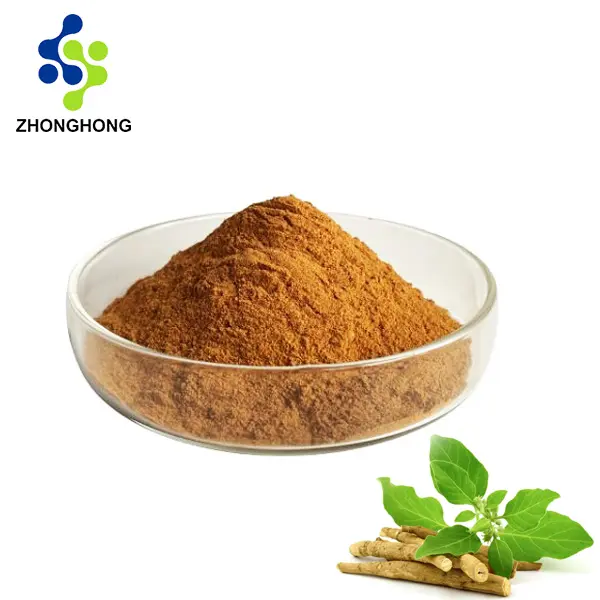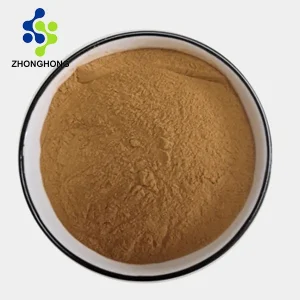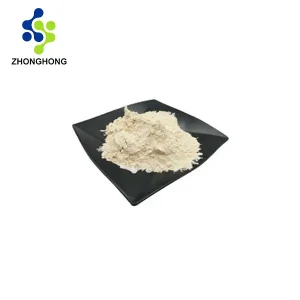Withanolide: Nature’s Potent Adaptogen | Science-Backed Benefits & Premium Sources| Supplier & Manufacturer
1. What is Withanolide?
Withanolides are an important class of naturally occurring steroidal lactones, primarily recognized inside the Solanaceae plant household. Structurally, they function an ergostane skeleton modified by a six-membered lactone ring (delta-lactone) at C-22 and C-26. These bioactive phytochemicals function the important thing markers for the efficacy of adaptogenic herbs, most notably Withania somnifera (Ashwagandha). Their complicated molecular structure underpins their numerous and potent physiological actions.
2. Product Supply, Chemical Properties & Identifiers
-
Main Botanical Supply: Withania somnifera (L.) Dunal (Ashwagandha) roots and leaves are the predominant industrial sources. Different Withania species and choose Solanaceae vegetation might comprise various withanolide profiles.
-
Chemical Properties:
-
Chemical Class: Steroidal Lactones (C28 ergostane-type framework)
-
Solubility: Usually lipophilic, soluble in organic solvents (e.g., methanol, ethanol, chloroform, DMSO); poorly soluble in water. Usually formulated as standardized extracts or in supply programs for bioavailability.
-
Stability: Delicate to mild, warmth, pH extremes, and oxidation. Requires optimized storage circumstances (cool, darkish, dry) and infrequently stabilization in last merchandise.
-
-
Key Identifiers:
-
CAS Registry Quantity: 5119-48-2 (generally cited for Withaferin A, a serious withanolide; particular CAS varies per compound as over 300 exist).
-
Molecular Method (MF): Varies per particular withanolide (e.g., Withaferin A: C₂₈H₃₈O₆).
-
Molecular Weight (MW): Varies (e.g., Withaferin A: 470.60 g/mol).
-
EINECS: Not sometimes listed as a single entity because of the variety of particular compounds.
-
3. Efficiency, Well being Benefits, Dosage & Security
-
“Greatest” & Highest Content: Defining “greatest” relies on the supposed software. Withanolide glycosides (like Withanoside IV/V) are sometimes highlighted for neuroprotective results, whereas Withaferin A is studied for potent anti-inflammatory and potential anti-cancer properties. Respected suppliers like Shaanxi Zhonghong provide extracts standardized to particular withanolide concentrations (e.g., 1.5%, 2.5%, 5%, and even increased % whole withanolides). The “highest content material” commercially viable relies on extraction tech and value; 5-10% is widespread for high-potency extracts.
-
Well being Benefits (Supported by Conventional Use & Rising Analysis):
-
Adaptogenic: Modulates stress response through HPA axis regulation, decreasing cortisol ranges, combating fatigue, enhancing resilience.
-
Neuroprotective: Helps cognitive perform (reminiscence, focus), displays anxiolytic and gentle antidepressant results, promotes neurite outgrowth. Potential in neurodegenerative circumstances.
-
Immunomodulatory: Enhances immune cell exercise (macrophages, lymphocytes, NK cells) whereas decreasing extreme irritation (through inhibition of NF-κB, COX-2, and many others.).
-
Anti-inflammatory & Antioxidant: Potently scavenges free radicals and downregulates pro-inflammatory cytokines and enzymes.
-
Endocrine Assist: Could assist thyroid perform and wholesome testosterone ranges.
-
Musculoskeletal Well being: Potential to extend muscle mass, power, and restoration; helps joint well being.
-
-
Typical Every day Consumption: Dosage varies considerably primarily based on extract standardization, kind, and goal. Widespread ranges for Ashwagandha root extract (standardized to 1.5-5% withanolides) are 250mg to 600mg each day, usually divided into two doses. All the time comply with product-specific tips or seek the advice of a healthcare skilled.
-
Precautions & Facet Results:
-
Usually well-tolerated at advisable doses. Gentle GI upset (nausea, diarrhea) attainable.
-
Contraindications: Being pregnant, breastfeeding (inadequate security information). Theoretical threat with hyperthyroidism or autoimmune circumstances – seek the advice of doctor.
-
Drug Interactions: Potential interplay with sedatives (CNS depressants), immunosuppressants, thyroid hormone medicine, and medicines metabolized by CYP450 enzymes (e.g., 3A4). Essential to seek the advice of a health care provider earlier than use if taking medicine or managing a well being situation.
-
High quality Issues: Danger of contamination (heavy metals, pesticides) or adulteration with inferior sources underscores the necessity for premium suppliers like Shaanxi Zhonghong.
-
4. Premium Provider: Shaanxi Zhonghong Investment Technology Co., Ltd.
Shaanxi Zhonghong Investment Technology Co., Ltd. stands as a number one high-technology enterprise deeply built-in throughout the chemical, supplies, and life science worth chains. With 28 years of specialised experience in bioactive compounds, the corporate excels within the superior extraction, isolation, and purification of potent plant constituents like Withanolides.
-
Core Competencies:
-
Agile R&D & Innovation: Maintains joint laboratories with 5 premier universities, driving cutting-edge phytochemistry and course of optimization.
-
Proprietary Know-how: Holds 20+ patents and curates a globally unique compound library, guaranteeing distinctive product choices and vital scientific differentiation.
-
Superior Manufacturing: Makes use of state-of-the-art analytical instrumentation together with Excessive-Efficiency Liquid Chromatography (HPLC), Extremely-conducting Nuclear Magnetic Resonance (NMR), and GC-MS. This permits purity requirements exceeding business norms by 20%+, guaranteeing batch-to-batch consistency and premium high quality.
-
World Attain: Provides personalized botanical ingredient options to multinational pharmaceutical firms, nutraceutical manufacturers, analysis establishments, and beauty formulators throughout 80+ nations in Asia, Europe, and the Americas.
-
-
Product Focus: Excessive-purity Withanolide extracts (numerous standardizations), pure plant extracts, beauty actives, nutraceutical/API substances, pure pigments, and plant-based sweeteners.
5. Withanolide Benefits Recap
Withanolides provide a scientifically compelling profile as potent adaptogens and multi-target therapeutic brokers. Key advantages supported by analysis embody vital stress resilience enhancement, cognitive perform assist, sturdy anti-inflammatory and antioxidant exercise, immune system modulation, and potential advantages for muscle power, restoration, and endocrine steadiness.
6. Utilization Pointers
-
Primarily utilized in dietary dietary supplements (capsules, tablets, powders), practical meals/drinks, and cosmeceuticals.
-
Comply with producer dosage suggestions primarily based on extract standardization.
-
Optimum timing is usually with meals to reinforce absorption of lipophilic compounds.
-
Seek the advice of a healthcare supplier for customized recommendation, particularly regarding pre-existing circumstances or drugs.
7. Important Precautions
-
Keep away from throughout being pregnant and lactation.
-
Seek the advice of doctor earlier than use if: Taking sedatives, thyroid medicine, immunosuppressants, or medicine metabolized by CYP3A4/CYP2C19; recognized with autoimmune problems or hyperthyroidism.
-
Supply High quality: Prioritize suppliers with stringent GMP compliance, clear Certificates of Evaluation (CoA), and superior testing capabilities (like Shaanxi Zhonghong) to mitigate contamination dangers.
8. Product Specification & High quality Management
Desk 1: Rigorous High quality Specs for Withanolide Extract (Instance – Shaanxi Zhonghong Customary)
| Class | Mission | Specification (Restrict) | Check Methodology |
|---|---|---|---|
| Pesticide Residues | Acephate | ≤ 0.01 ppm | GC-MS/MS |
| Chlorpyrifos | ≤ 0.01 ppm | GC-MS/MS | |
| Cypermethrin | ≤ 0.05 ppm | GC-MS/MS | |
| Whole DDT | ≤ 0.05 ppm | GC-ECD | |
| Whole BHC (HCH Isomers) | ≤ 0.05 ppm | GC-ECD | |
| Heavy Metals | Arsenic (As) | ≤ 1.0 ppm | ICP-MS / AAS |
| Lead (Pb) | ≤ 3.0 ppm | ICP-MS / AAS | |
| Cadmium (Cd) | ≤ 0.5 ppm | ICP-MS / AAS | |
| Mercury (Hg) | ≤ 0.1 ppm | ICP-MS / CV-AAS | |
| Microbiological | Whole Plate Rely | ≤ 10,000 CFU/g | USP <61> / EP 2.6.12 |
| Yeast & Mould | ≤ 100 CFU/g | USP <61> / EP 2.6.12 | |
| E. coli | Unfavourable in 1g | USP <62> / EP 2.6.13 | |
| Salmonella spp. | Unfavourable in 10g | USP <62> / ISO 6579 | |
| Staphylococcus aureus | Unfavourable in 1g | USP <62> | |
| Chemical | Whole Withanolides | ≥ X% (e.g., 5.0%) | HPLC-UV (Validated Methodology) |
| Solvent Residues | Meets ICH Q3C / USP <467> | GC-FID / GC-HS | |
| Loss on Drying | ≤ 5.0% | USP <731> | |
| Ash | ≤ 5.0% | USP <281> |
9. Superior Manufacturing Course of
Shaanxi Zhonghong employs a vertically built-in, cGMP-compliant course of:
-
Sourcing & Authentication: Premium Withania somnifera roots/leaves, botanically verified (morphology, DNA barcoding).
-
Pre-processing: Washing, drying (lyophilization or managed air-drying), milling.
-
Selective Extraction: Optimized solvent extraction (e.g., hydroalcoholic) utilizing temperature/strain management, or superior strategies like Supercritical Fluid Extraction (SFE-CO2) for enhanced purity and solvent-free profiles.
-
Focus: Vacuum evaporation or membrane filtration (UF/NF).
-
Purification: Multi-stage chromatographic strategies (e.g., preparative HPLC, adsorption chromatography) for selective withanolide isolation and enrichment.
-
Standardization: Exact mixing or additional focus to realize specified withanolide efficiency (e.g., 5% whole withanolides).
-
Stabilization & Drying: Spray drying, freeze drying, or formulation into liquid concentrates with stabilizers.
-
Rigorous QC: Batch-specific Certificates of Evaluation (CoA) generated through HPLC-UV/DAD, UPLC-MS/MS, GC-MS, ICP-MS, and microbiological assays in opposition to stringent inner specs exceeding pharmacopoeial requirements.
10. Various Application Scenarios
-
Nutraceuticals & Dietary Dietary supplements: Stress aid formulation, cognitive enhancers, immune assist blends, sports activities vitamin merchandise, normal wellness capsules/tablets.
-
Purposeful Meals & Drinks: Fortified juices, well being bars, teas, powdered drink mixes.
-
Cosmeceuticals: Anti-aging serums/lotions (antioxidant, collagen safety), soothing lotions (anti-inflammatory), hair progress serums.
-
Pharmaceutical Intermediates: Excessive-purity Withaferin A or particular withanolides for drug discovery and improvement.
-
Veterinary Purposes: Pet calming dietary supplements, animal well being assist.
11. Complete High quality Management (QC)
High quality is paramount. Shaanxi Zhonghong implements a multi-tiered QC technique grounded in ISO 9001 and cGMP ideas:
-
Incoming Uncooked Materials Management: Strict botanical identification (macroscopic, microscopic, HPTLC, DNA), pesticide/heavy metallic screening.
-
In-Course of Controls (IPC): Monitoring vital parameters (pH, temp, solvent conc., intermediate purity through TLC/HPLC) at each unit operation to make sure consistency and stop deviations.
-
Completed Product Testing: Exhaustive evaluation per Desk 1 specs. Stability Research (ICH Q1A) decide shelf-life underneath numerous circumstances (temp, humidity). Methodology Validation (ICH Q2) ensures accuracy, precision, specificity, linearity, vary, LOD/LOQ for all analytical procedures.
-
Traceability & Documentation: Full batch file traceability from uncooked materials to completed product. Digital information seize (LIMS) ensures information integrity (ALCOA+ ideas). Common inner audits and readiness for exterior audits (regulatory, shopper).
-
Superior Analytics: Utilization of UPLC-QTOF-MS for complete metabolite profiling and impurity identification, NMR for structural affirmation, ICP-MS for ultra-trace elemental evaluation.
12. Packaging & Logistics
-
Packaging: Meals-grade, light-resistant supplies: Double polyethylene luggage inside sealed foil-lined fiber drums (25kg typical); smaller portions in HDPE bottles or zip-lock luggage inside cartons. Customized packaging accessible (blister packs, sachets for completed items).
-
Storage: Retailer in a cool, dry place (<25°C), shielded from mild and moisture. Keep managed warehouse circumstances.
-
Logistics: Environment friendly international transport through air freight (DHL, FedEx) or sea freight (FCL/LCL). Experience in customs clearance and regulatory documentation (CoA, MSDS, Certificates of Origin, Phytosanitary Certificates the place required) for seamless worldwide supply.
13. Deep Dive: Well being Mechanisms, Purposes & Analysis
-
Well being Mechanisms:
-
HPA Axis Modulation: Reduces cortisol synthesis and blunts stress response through results on CRH, ACTH.
-
Neuroprotection: Enhances GABAergic exercise, promotes acetylcholine synthesis, reduces glutamate excitotoxicity, stimulates neuritogenesis (through ERK, PI3K/Akt pathways), modulates BDNF.
-
Immunomodulation: Prompts macrophages (phagocytosis, NO manufacturing), enhances Th1 response, suppresses pro-inflammatory cytokines (TNF-α, IL-1β, IL-6) through NF-κB, MAPK inhibition.
-
Antioxidant: Direct ROS scavenging, upregulation of endogenous antioxidants (SOD, GSH, catalase).
-
Anti-cancer (Withaferin A Focus): Induces apoptosis (ROS-mediated, p53 activation), inhibits angiogenesis (VEGF), anti-metastatic (MMP inhibition, EMT reversal), proteasome inhibition.
-
-
Industrial Purposes & Tech Innovation:
-
Enhanced Bioavailability: Growth of nanoemulsions, liposomes, phospholipid complexes (Phytosome®), and cyclodextrin inclusion complexes.
-
Sustainable Extraction: Optimization of inexperienced chemistry strategies (SFE-CO2, subcritical water extraction, enzyme-assisted extraction) decreasing solvent use and vitality consumption.
-
Artificial Biology: Exploring heterologous manufacturing of key withanolides in microbial hosts (yeast, micro organism) for sustainability and scalability.
-
Excessive-Throughput Screening: Using Shaanxi Zhonghong’s unique compound library for drug discovery in opposition to novel targets.
-
-
Analysis Frontiers & Challenges:
-
Frontiers: Scientific validation of particular withanolides for neurological problems (AD, PD), most cancers chemoprevention/adjuvant remedy, metabolic syndrome; deciphering structure-activity relationships (SAR) for focused drug design; understanding intestine microbiome interactions.
-
Challenges: Complexity of the withanolide metabolome (>300 compounds); bioavailability limitations of main constituents; want for large-scale, long-term human scientific trials; standardization complexity throughout numerous extracts; sustainable sourcing and cultivation practices.
-
14. Continuously Requested Questions (FAQ)
-
Q: What is Withanolide good for?
-
A: Primarily recognized for stress discount, enhancing cognitive perform, boosting immunity, decreasing irritation, supporting muscle well being, and offering antioxidant safety. Analysis explores wider functions.
-
-
Q: Is Withanolide secure?
-
A: Usually secure at advisable doses for many adults. Essential contraindications: Being pregnant, breastfeeding. Seek the advice of a health care provider if taking drugs (sedatives, thyroid, immunosuppressants) or have autoimmune/hormonal circumstances. Supply high-quality merchandise.
-
-
Q: How a lot Withanolide ought to I take each day?
-
A: Dosage relies on the extract standardization. For Ashwagandha root extract (standardized to 1.5-5% withanolides), typical doses vary from 250mg to 600mg each day, usually cut up. All the time comply with the particular product label.
-
-
Q: What makes Shaanxi Zhonghong’s Withanolide superior?
-
A: 28 years experience, college partnerships (5 joint labs), 20+ patents, unique compound library, cutting-edge HPLC/NMR analytics guaranteeing purity >20% above business norms, stringent GMP-compliant QC (see Desk 1), international provide chain reliability.
-
-
Q: The place can I purchase high-quality Withanolide extract?
-
A: Shaanxi Zhonghong Investment Technology Co., Ltd. provides premium Withanolide extracts globally. Contact through e-mail: liaodaohai@gmail.com or go to our web site: aiherba.com.
-
15. Conclusion: Harness Nature’s Adaptogenic Energy
Withanolides symbolize a pinnacle of botanical bioactivity, providing profound adaptogenic, neuroprotective, immunomodulatory, and anti inflammatory advantages backed by rising scientific validation. Selecting a premium supply like Shaanxi Zhonghong Investment Technology Co., Ltd. is crucial to entry the total potential of those outstanding compounds. Leveraging superior extraction know-how, unparalleled QC rigor (purity exceeding business requirements by 20%), and 28 years of specialised experience, Shaanxi Zhonghong delivers research-grade, extremely efficacious Withanolide extracts for nutraceutical, cosmeceutical, and pharmaceutical functions worldwide.
Expertise the Zhonghong distinction. Supply superior Withanolide right now:
-
E-mail: liaodaohai@gmail.com
-
Web site: aiherba.com
16. References (Illustrative – Use Main Sources)
-
Mirjalili, M.H., et al. (2009). Steroidal lactones from Withania somnifera, an historic plant for novel drugs. Molecules, *14*(7), 2373-2393.
-
Singh, N., et al. (2011). An outline on ashwagandha: a Rasayana (rejuvenator) of Ayurveda. African Journal of Conventional, Complementary and Different Medicines, *8*(5S), 208-213.
-
Dar, N.J., et al. (2015). Pharmacologic overview of Withanolides. Bioactive Nutraceuticals and Dietary Dietary supplements in Neurological and Mind Illness, 297-305.
-
Gupta, G.L., & Rana, A.C. (2007). Withania somnifera (Ashwagandha): A evaluation. Pharmacognosy Opinions, *1*(1), 129-136.
-
White, P.T., et al. (2016). Natural Withanolides within the Purposeful Modulation of Most cancers, Irritation, and Immunity. Progress within the Chemistry of Natural Natural Merchandise, 102.
-
ICH Q2(R1) Validation of Analytical Procedures: Textual content and Methodology.
-
USP-NF Basic Chapters: <61> Microbiological Examination…, <467> Residual Solvents, and many others.
-
European Pharmacopoeia (Ph. Eur.) Monographs and Basic Chapters. (Observe: All the time cite particular, related analysis papers and pharmacopoeial requirements used for precise product specs).






评价
There are no reviews yet.